

 Share This Page
Share This Page| Home | | Sailing | | Alaska 2011 | |  |  |  Share This Page Share This Page |

Copyright © 2011, P. Lutus. All rights reserved. Message Page
| Prior years: |
Alaska 2002 |
Alaska 2003 |
Alaska 2004 |
Alaska 2005 |
Alaska 2006 Alaska 2007 | Alaska 2008 | Alaska 2009 | Alaska 2010 |
(double-click any word to see its definition)
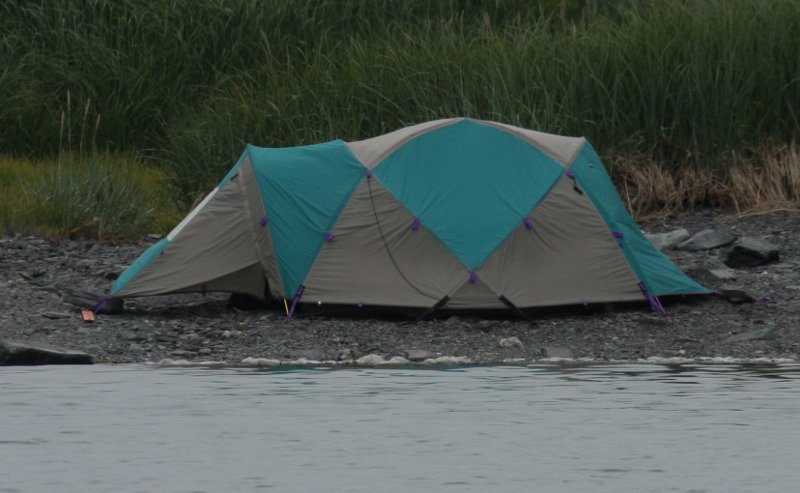
When I arrived at Coghill Point (Prince William Sound) this year, in preparation for a kayak outing up to Coghill Lake (a story I tell in my next article), I saw that some kayakers had set up camp and drawn their kayaks ashore on a nearby beach. It was about 14:00 local time (that's 2 PM for you civilians).
After a moment's observation, I took the picture in Figure 1. And why did I take this picture — isn't Figure 1 the most ordinary scene, a tent on a beach commonly used by kayakers? What could possibly be less interesting than a dumb tent on a beach? The answer is that I knew the tent would be underwater within four hours and I wanted to record a "before" shot, so people could see how innocent everything looked beforehand.
What did I know that the kayakers didn't know? How was I so sure they had made a trivial but potentially dangerous error, one I could see at a glance by looking at their tent? Here's how:
Some of my readers may wonder why I didn't go ashore, move the tent higher on the beach, and secure the kayaks — wouldn't that have been a nice gesture, one requiring only five minutes? Wasn't I being spectacularly cruel, wading in schadenfreude instead of salt water? Clearly the kayakers' safety was in jeopardy if their camping equipment became unusable and their kayaks drifted away, and I could have done something about it.
These are reasonable questions, but in the context of an Alaska wilderness site, I acted appropriately. First, if I went ashore to move the tent and if the kayakers were asleep inside (something I didn't know), they would have the right to shoot me on the spot. Later, they could say, "I thought it was a bear outside my tent, instead it was an idiot — I shot him, so sue me." As to the kayaks, an observer might well draw the conclusion that I was trying to steal two rather nice boats, and my explanation might ring hollow — "I was keeping them from drifting away." Sure, buddy.
I am always ready to respond in an emergency, but it must be one in which people directly ask for help — I wouldn't think of intervening before a real emergency arose. I wasn't always this conservative — there was a time when I would have been more proactive. But several years ago I met a natural, free-roaming parasite at large in human society, and that experience has changed me permanently.
But back to my story. The kayakers finally returned to their campsite (see pictures below) and discovered their mistake. They spent several hours recovering their adrift kayaks and squeezing salt water out of their gear. All this made me wonder how they managed to get to Coghill Point, a rather remote location, without knowing anything.
But I finally figured it out — they hadn't paddled to Coghill Point from the nearest town (Wrangell, 31 nautical miles away), they had been transported by a wilderness cruise outfit with a big boat (see picture below) who put them into the kayaks just offshore — they had paddled just 1/2 mile to the beach. They didn't really need to know anything — their rescuers were within shouting distance.
Later, on reflection, it should have been obvious to me that these kayakers hadn't gotten to Coghill Point on their own steam — they very clearly didn't know enough about nature to get that far into the wild. Then, in the last act and what was possibly the funniest part of the story, the kayakers struck their camp and stacked all the gear on shore, ready for pickup — below the high tide line. You know — to clearly show how much they had learned.
Then I thought about the wilderness cruise director — he could see the beach as well as I could, and surely he realized what was going to happen, just as I did. But if he told his clients how to pitch a tent, or if he went ashore and physically moved the tent and the kayaks, the clients would have been humiliated and wouldn't have gone out with him again or recommended him to others. In Alaska, wilderness is a commodity and the customer is always right.
In summary, if you want to keep your equipment dry and not lose your boat, learn how to read the water and the land. A shore of bare gravel is eventually going to be underwater. Even a grassy shore isn't necessarily above the high tide line (some shoreline grass species tolerate salt water). Yesterday's tidal height isn't today's tidal height. And never, ever pitch a tent on a bare gravel shore.
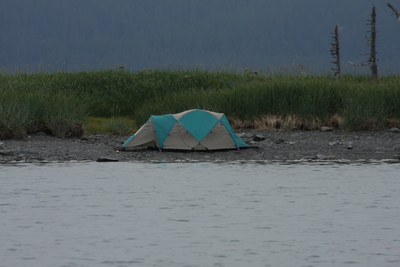
|
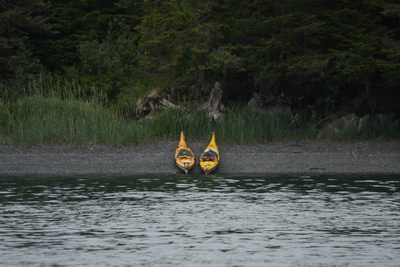
|
|
14:00 (2 PM) and all is well.
|
|
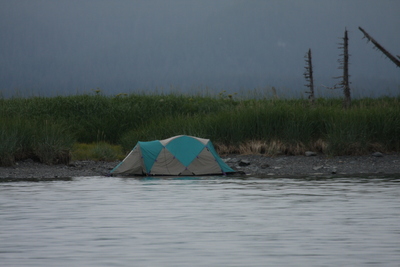
|
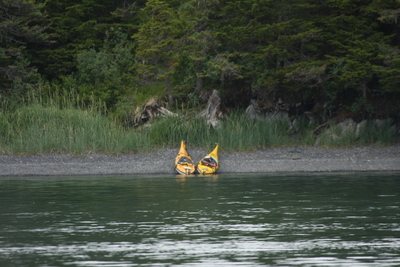
|
|
16:00 (4 PM) and all is wet.
|
|
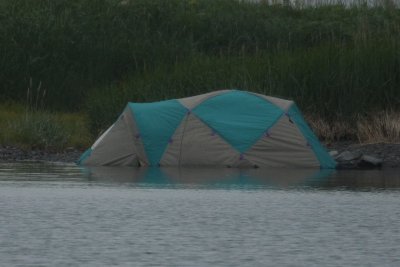
|
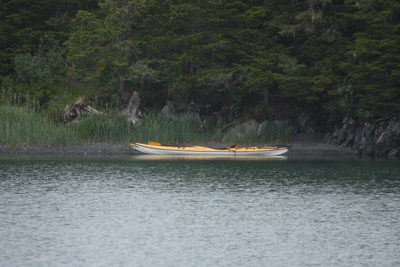
|
|
18:00 (6 PM): Bedding and food drenched, kayaks adrift.
|
|
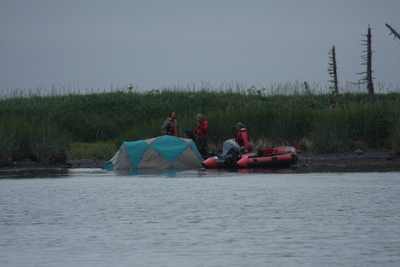
20:00 (8 PM): Kayakers return to their awash campsite
|
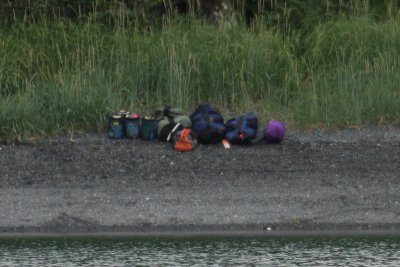
Later: the kayakers assemble their gear
for evacuation — below the high tide line |
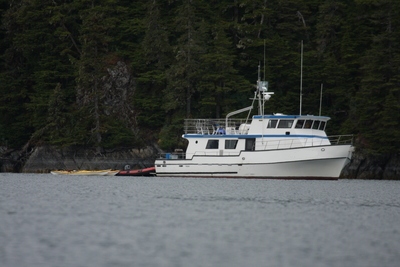 The kayakers at the "mother ship" after they evacuated the beach |
|
| Home | | Sailing | | Alaska 2011 | |  |  |  Share This Page Share This Page |